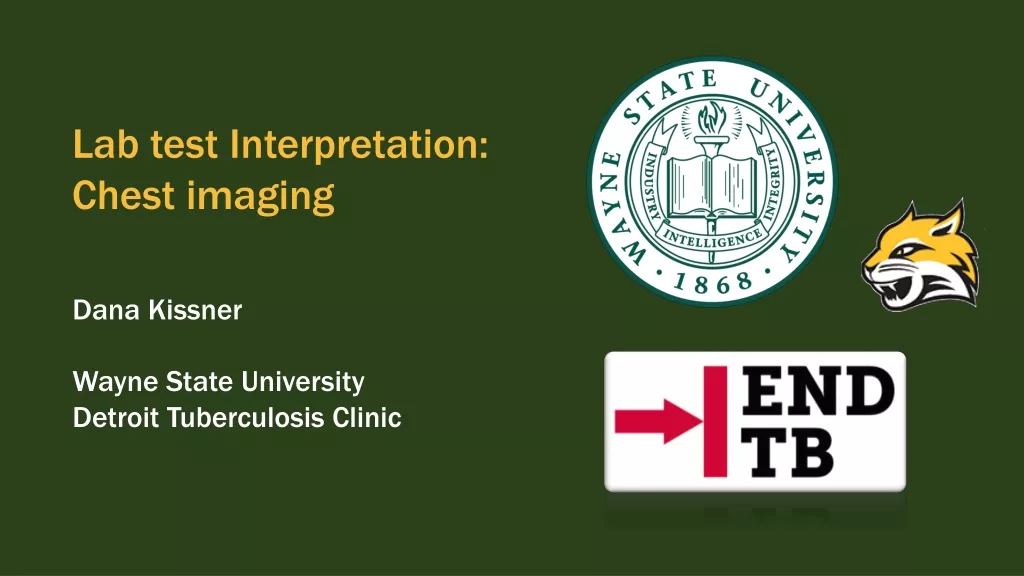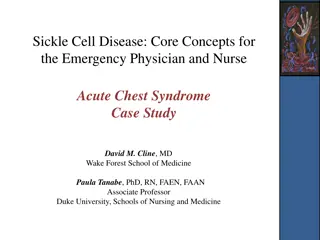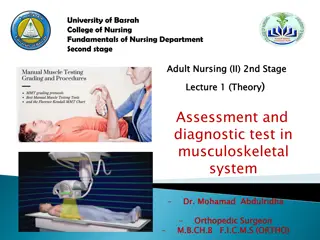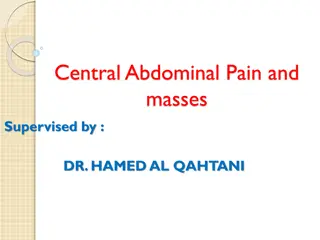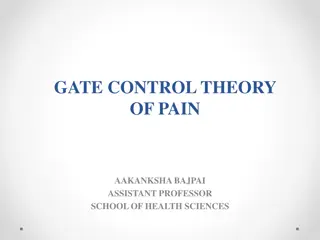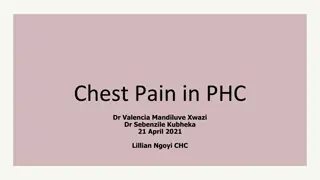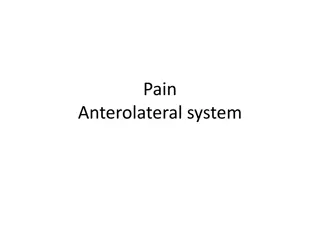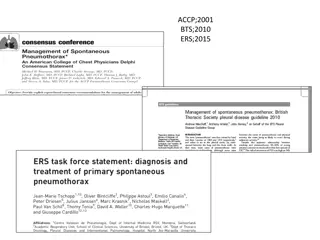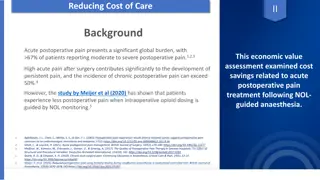Male Patient with Chest Pain and Sweating: Diagnosis and Management
The 60-year-old male patient presents with chest pain, radiating to arm and back, accompanied by sweating and nausea since morning. Laboratory investigations indicate elevated levels in CBC count, ESR, CPK-MB, and lipid profile, suggestive of unstable angina. ECG findings also support the diagnosis. Immediate medical intervention and management are necessary for this critical cardiac condition.
Download Presentation

Please find below an Image/Link to download the presentation.
The content on the website is provided AS IS for your information and personal use only. It may not be sold, licensed, or shared on other websites without obtaining consent from the author.If you encounter any issues during the download, it is possible that the publisher has removed the file from their server.
You are allowed to download the files provided on this website for personal or commercial use, subject to the condition that they are used lawfully. All files are the property of their respective owners.
The content on the website is provided AS IS for your information and personal use only. It may not be sold, licensed, or shared on other websites without obtaining consent from the author.
E N D
Presentation Transcript
SCENARIO: Here is the male patient of age 60 yrs was admitted to the hospital with complaints of chest pain since morning 10am radiating to arm and back pricking type and sweating and nausea . CHIEF COMPLAINTS: c/o chest pain since 10am radiating to arm and back,pricking type sweating since 10am HISTORY OF PRESENT ILLNESS:Patient was apparently alright upto 10am then he developed chest pain at L- mammary which is acute in onset and progressive in nature radiating to arm and back,pricking type.lasted for 5 minutes.sweating vigorously since 10am then he lasted for 15-20 min.nausea since 10am acute in onset and progressive in nature.
PAST MEDICAL HISTORY: Nothing significant PAST MEDICATION HISTORY: Nothing significant FAMILY HISTORY: Nothing significant PERSONAL HISTORY: Nothing significant SURGICAL HISTORY: Nothing significant
LABORATORY INVESTIGATIONS: (why test performed): CBC count: it is a blood test used to evaluate overall health and detect wide range of disorders<including anemia,infection,leukemia. sno Reference Values Test Values Result 1 Polymorphs(40-60) 83 Increased 2 Lymphocytes(20-60) 16 Decreased 3 MCV(80-100)fl 105.7 Increased 4 MCH(32-36)g/dl 38.1 Increased ESR:it is useful for detecting inflammation in the body that may be caused by infection.use for diagnosing some cancers and certain autoimmune diseases.
sno Reference Values Test Values Result 1 ESR(mm/hr)M<10,F<20 20 Increased CPK MB:this test is perfored to detect heart disease like IHD.this test is done after patient experiencing symptoms of heart diseases.this testvmeasures the level of creatine phosphokinase in the blood and used to detect muscle damage. sno Reference Values Test Values Result 1 CPK MB(0-26)u/l 15 normal LIPID PROFILE TEST:this test is used to identify hyperlipidemiaof cholesterol and tryglycerides levels which are use for recognising cvs diseases.
sno Reference Values Test Values Result 1 Cholesterol(150-250)mg/dl 313 Increased 2 VLDL(15-45)mg/dl 98 Increased 3 Triglycerides(65-170)mg/dl 249 Increased 4 LDL(90-136)mg/dl 192 Increased ECG:this is performed to measure the electrical activity of our heart.heartgenerates electrical signal which flows from heart to whole body.itcan determine whether the heart is performing normally or suffering from abnormalities.
SUBJECTIVE EVIDENCE: complaints of chest pain radiating to arms and back,sweating since 10am.and nausesince 10am. OBJECTIVE EVIDENCE: X-ray DIAGNOSIS:based on laboratory investigations and subjective,objective evidence the patient diagnosed with IHD-UNSTABLE ANGINA.
MEDICATION CHART: s n o Trade Name Generic Name Dose Indicati on 1 2 3 4 5 6 7 1 I.Kephazone 1-0-1 cefoperazon e 1gm antibiotic y y y y N N N 2 I.Pantodoc 1-0-0 pantoprazol e 40mg PPI y y y y y N N 3 I.Vomikind 1-1-1 ondansetro n 1amp Anti emetic y y y y y y y 4 T.Sorbitrate (1-1-1) Isosorbide di nitrate 5mg angina y y y y y y y 5 T.Clopivast(0 -1-0) clopidogrel 150mg Anti platelet y y y y y y Y 6 T.Tonact(0-0- 1_ atorvastatin 40mg hyperlipi demia y y y y y y y
sn o Trade Name Generic Name Dose Indicati on 1 2 3 4 5 6 7 7 I.Hepanox 1-0-1 enoxaparin 0.4ml thrombo sis y N N N N N N 8 T.Anxit 0-0-1 Alprazolam 0.25m g Anxiety y y y y y y Y 9 SYP.cremaffin plus Liquid paraffin 2 tsp laxative y y y y y y Y 10 I.Hapanox 1-0-1 enoxaparin 0.4ml thrombo sis N N y y y N N 11 I.Ceftriaxone 1-0-1 ceftriaxone 1gm antibiotic N N N N y y y 12 Cap.neopride 1-0-0 levosulpride psychose s N N N N N N y
ASSESSMENT OF EACH TEST: ESR:ESR increased due to infection that associated with heart disease like IHD and angina.it is increased during inflammation. POLYMORPHS:polymorphsare increased due to infection or inflammation.the role of polymorphs is to defend the body from microorganisms and substances which harm the body.when there is inflammation in the body the production may increases. LYMPHOCYTES: Lymphocytes play an important role in the immunologic activity and produce antibodies.decreased lymphocytes causes decrease in immunity which leads to severe illness.
PHARMACEUTICAL CARE ISSUES: No issues are found MONITORING PARAMETERS: Continuous ST-segment monitoring in unstable angina. Oxygen supplement. Monitoring cholesterol levels. Reduce or prevent angina symptoms. CONCLUSION:Based on laboratory interpretation the patient is diagnosed with IHD with UNSTABLE ANGINA.


